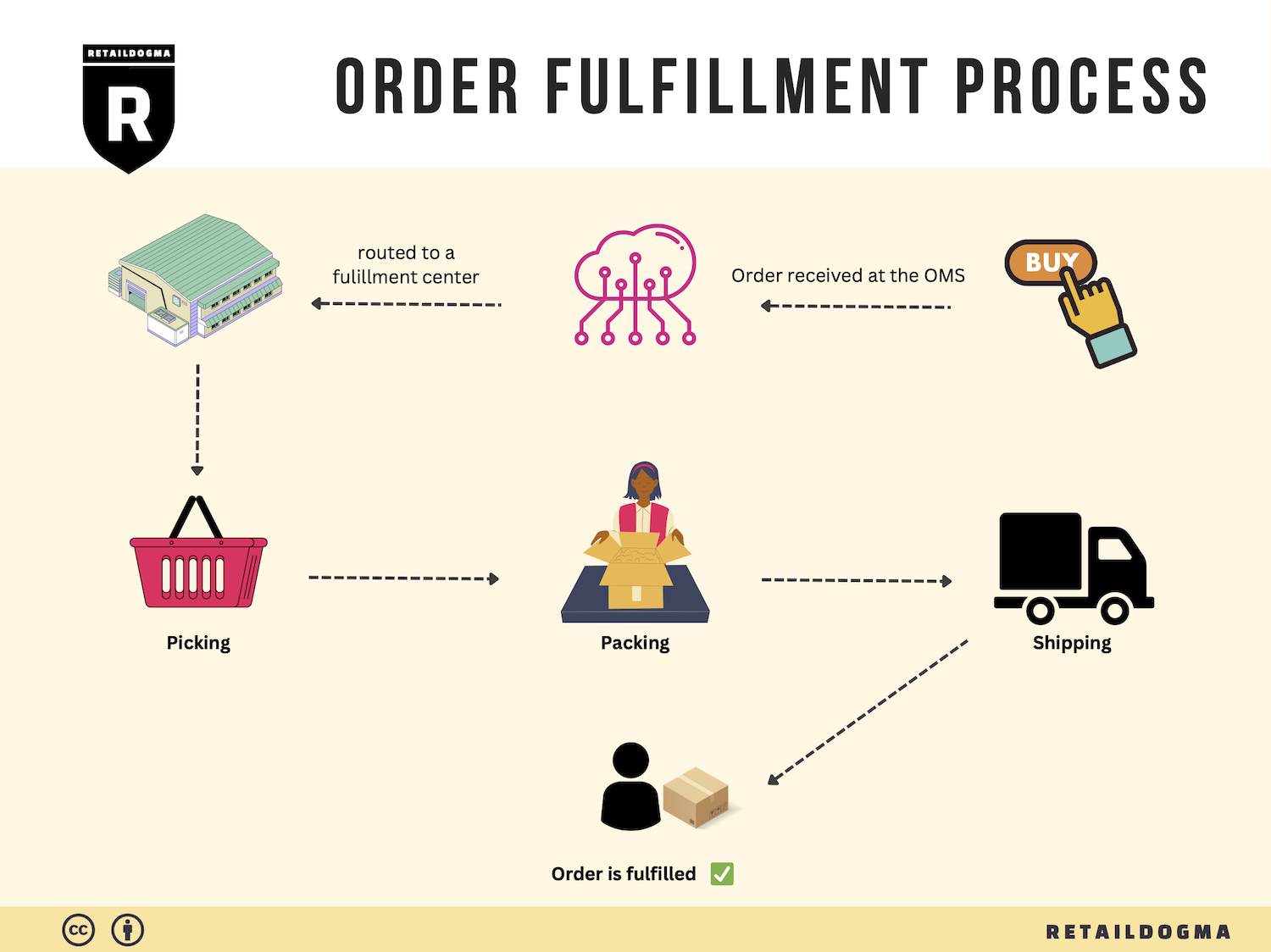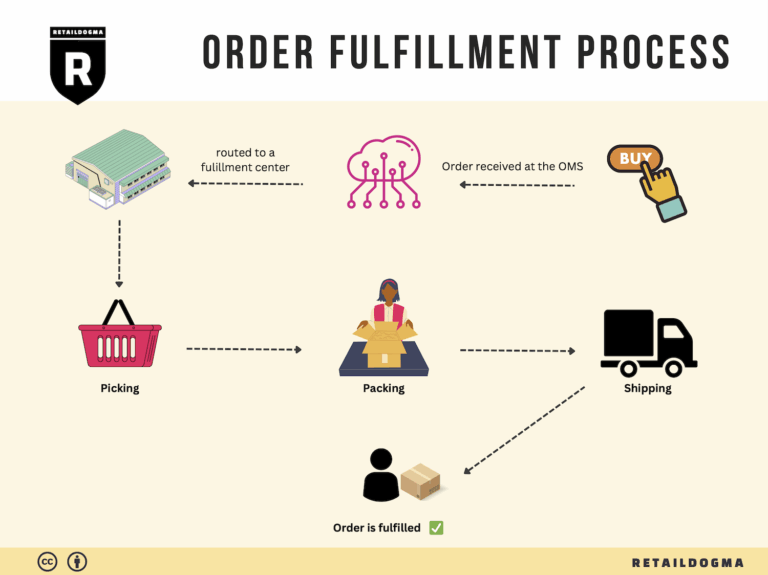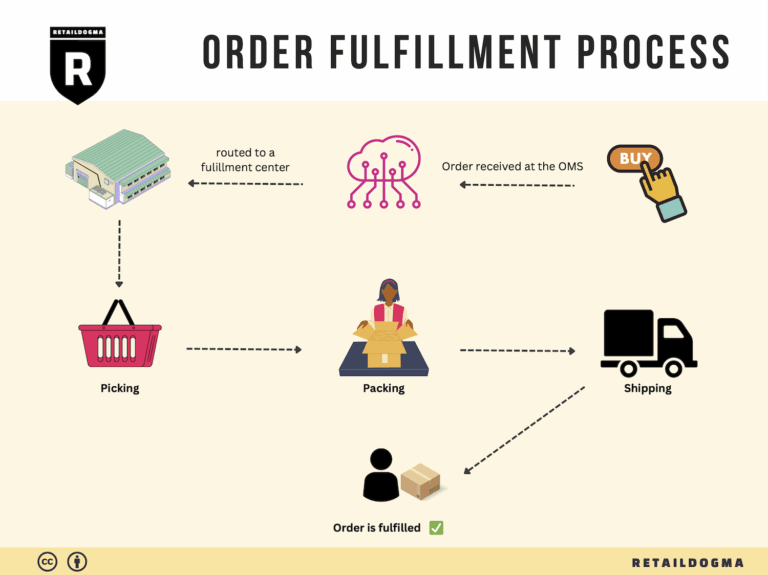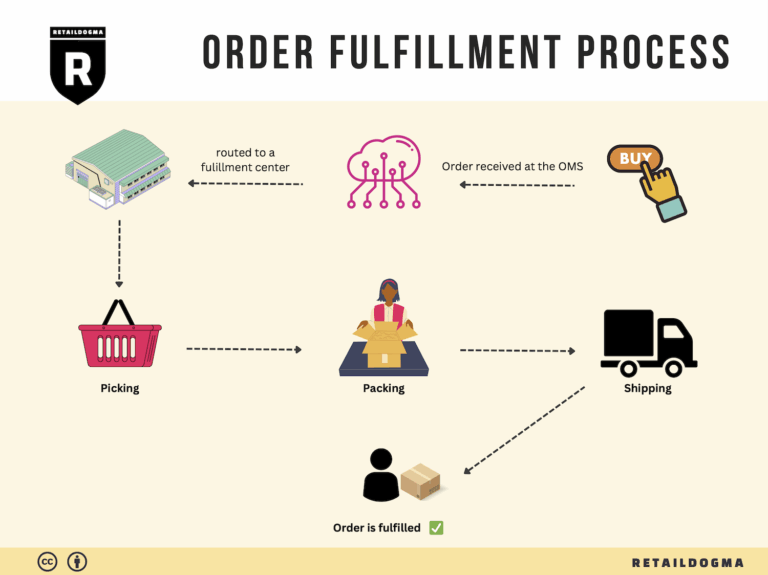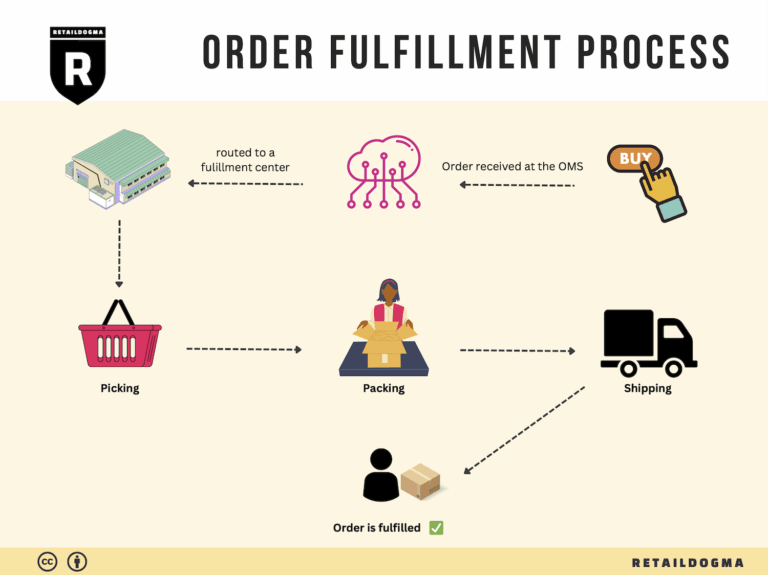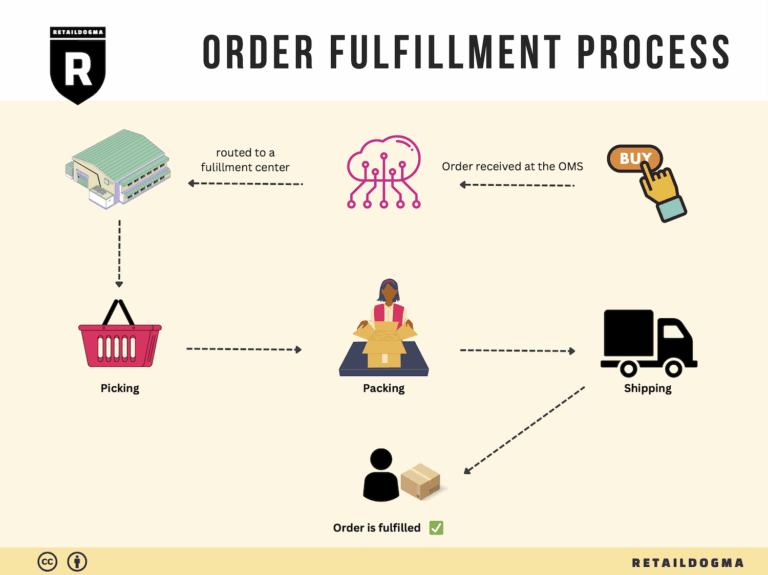Ecommerce Fulfillment Services: The Ultimate Guide (2025)
What is E-commerce Fulfillment? An Introduction for Growing Businesses
Understanding the Challenge of E-commerce Fulfillment
As your e-commerce business scales, the excitement of increased sales can quickly turn into a daunting challenge. Many entrepreneurs find themselves overwhelmed with the logistics of packing and shipping orders, especially as their customer base expands. The process of getting a product to a customer—known as fulfillment—becomes a critical aspect of your operations, and handling it inefficiently can lead to delays, lost sales, and unsatisfied customers.
Defining E-commerce Fulfillment
At its core, e-commerce fulfillment is the comprehensive process of receiving, processing, and delivering orders to customers. This involves everything from inventory management and order processing to packaging and shipping. As your business grows, finding an efficient and reliable way to manage these tasks becomes essential to maintaining customer satisfaction and scaling effectively.
What This Guide Will Cover
This guide aims to demystify the world of e-commerce fulfillment and provide you with actionable insights to optimize your logistics. We will explore various fulfillment models, including:
- Third-Party Logistics (3PL): Outsourcing your fulfillment to a specialized provider, allowing you to focus on core business activities.
- Fulfilled by Amazon (FBA): Leveraging Amazon’s vast distribution network to reach customers quickly and efficiently.
In addition to these models, we’ll delve into the core services that fulfillment partners offer, such as inventory management, order processing, and returns handling. Understanding these services will help you identify what your business truly needs.
Choosing the right fulfillment partner is crucial. We will discuss key factors to consider when evaluating potential partners, including their technology capabilities, service levels, and geographic reach.
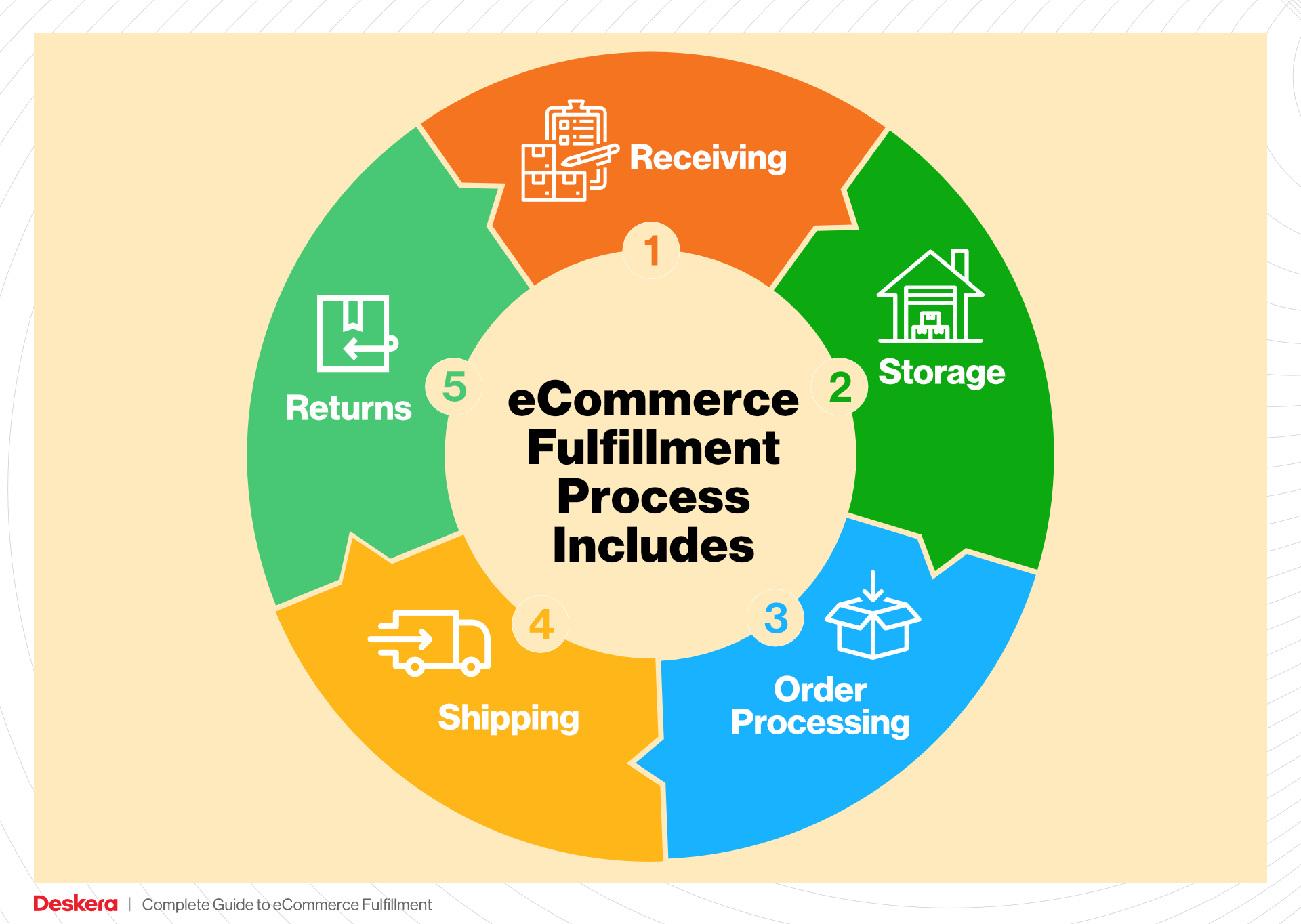
Finally, we will cover pricing structures associated with different fulfillment options, helping you understand how to budget for these services effectively and avoid unexpected costs.
Empowering Smart Decisions
The goal of this guide is to empower you, as a business owner or operations manager, to make informed decisions about your logistics strategy. With the right knowledge and resources, you can streamline your fulfillment processes, enhance customer satisfaction, and ultimately drive your business growth. Whether you are just starting or looking to scale, understanding e-commerce fulfillment is a vital step toward achieving your operational goals.
What You’ll Learn In This Guide
- What is E-commerce Fulfillment? An Introduction for Growing Businesses
- The Order Fulfillment Process: From ‘Buy’ Button to Customer’s Door
- Comparing Fulfillment Models: In-House vs. 3PL vs. Dropshipping
- A Deep Dive into Amazon FBA: Pros, Cons, and Who It’s For
- Core Services Offered by Fulfillment Centers
- How to Choose a Fulfillment Partner: A 6-Point Checklist
- Understanding Fulfillment Pricing: A Breakdown of Common Fees
- Frequently Asked Questions (FAQs) about Fulfillment
- Conclusion: Is Outsourcing Fulfillment the Right Move for Your Business?
- Important Disclaimer
The Order Fulfillment Process: From ‘Buy’ Button to Customer’s Door
1. Receiving Inventory
The order fulfillment process begins with receiving inventory at the fulfillment center. When products arrive, they are unloaded and checked against the purchase orders to ensure accuracy. This step is crucial because it sets the foundation for the entire fulfillment process. Any discrepancies at this stage can lead to issues down the line, including delays in order processing and customer dissatisfaction.
Key term: SKU (Stock Keeping Unit) – Each product is assigned a unique SKU that helps track inventory levels and facilitates efficient processing. By utilizing SKUs, businesses can manage their inventory effectively, ensuring that stock levels are maintained and that products are easily identifiable throughout the fulfillment process.
2. Warehouse Storage
Once inventory is received and verified, it is then stored in designated areas within the warehouse. Effective storage solutions are vital for optimizing space and ensuring quick access to products when needed. Products are often organized by categories, sizes, or sales velocity, allowing for a streamlined picking process.
This stage is important because well-organized storage can significantly reduce the time it takes to fulfill orders. Properly managed warehouse space also lowers operational costs and enhances overall productivity.
Key term: ABC Analysis – This inventory categorization technique helps prioritize items based on their value and sales frequency. By identifying high-value or fast-moving products, businesses can allocate more accessible storage locations, thereby increasing efficiency during order picking.
3. Order Picking
When a customer places an order, the next step is order picking, where items are selected from storage based on the order details. Warehouse staff utilize tools such as pick lists, which detail the items and their respective locations within the warehouse. The accuracy and speed of this process directly affect customer satisfaction, as timely and correct order fulfillment is paramount.
Order picking can be performed in various ways, including single-order picking, batch picking, or zone picking, depending on the volume and complexity of orders.

Key term: Pick Lists – These documents or digital displays guide staff through the warehouse, listing all items needed for an order. Efficient pick list management can significantly reduce picking errors and time taken to gather products.
4. Order Packing
After items have been picked, they move to the packing station, where they are prepared for shipment. This step involves verifying that all items are included and securely packaging them to prevent damage during transit. Packing is critical as it not only protects the products but also enhances the customer’s unboxing experience, which can impact brand loyalty.
Efficient packing processes can also reduce shipping costs and ensure compliance with shipping regulations.
Key term: Packing Slip – This document accompanies the shipment and lists the items included in the package. It serves as a reference for both the customer and the fulfillment center, ensuring transparency and accuracy in the fulfillment process.
5. Shipping & Delivery
The final step in the order fulfillment process is shipping and delivery. Once packages are packed, they are labeled and handed over to shipping carriers. This stage is vital as it determines how quickly and reliably products reach customers. Businesses must choose the right carriers and shipping methods to balance cost and delivery speed effectively.
Tracking systems are often integrated into this step, allowing customers to monitor their orders in real-time. A smooth shipping process is essential for maintaining customer satisfaction and building trust in the brand.
Key term: Last-Mile Delivery – This term refers to the final leg of the shipping process, where the product is delivered from a transportation hub to the customer’s door. Optimizing last-mile delivery is crucial for enhancing delivery speed and reducing costs, making it a key focus area for scaling e-commerce businesses.
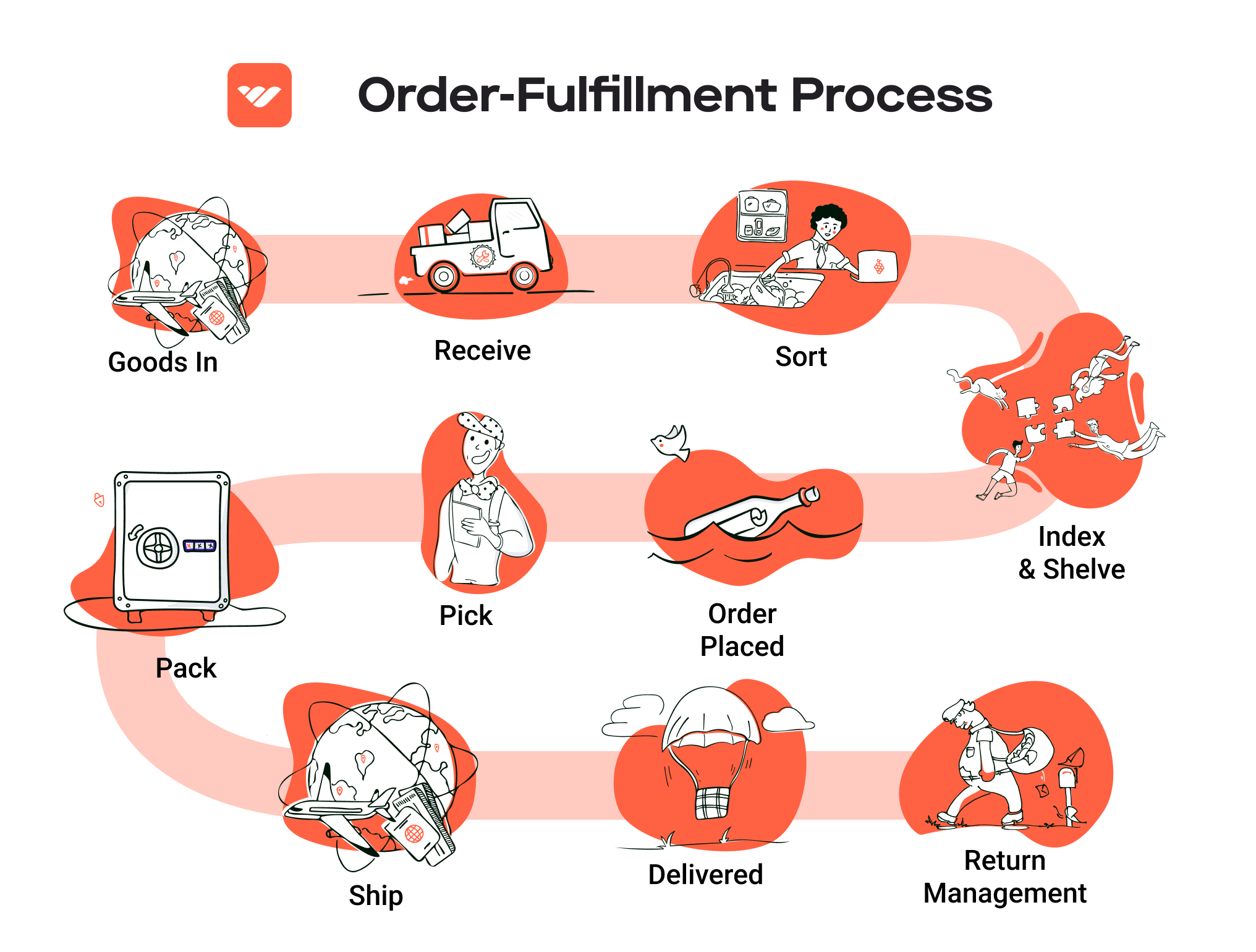
In conclusion, understanding and optimizing each step of the order fulfillment process can significantly impact the efficiency of operations and customer satisfaction. By focusing on effective inventory management, organized warehouse storage, precise order picking, careful packing, and reliable shipping, e-commerce businesses can scale effectively and meet the growing demands of their customers.
Comparing Fulfillment Models: In-House vs. 3PL vs. Dropshipping
Fulfillment Models Comparison
| Model | Who Handles Inventory | Best For (Business Stage) | Key Advantage | Key Disadvantage |
|---|---|---|---|---|
| In-House Fulfillment | The business itself | Established businesses with stable demand | Full control over inventory and operations | High overhead costs and resource demands |
| Third-Party Logistics (3PL) | A third-party logistics provider | Growing businesses looking to scale | Cost-effective and scalable solutions | Less control over inventory and processes |
| Dropshipping | Supplier or manufacturer | Startups and small businesses with limited capital | Low startup costs and no inventory risk | Lower profit margins and reliance on suppliers |
In-House Fulfillment
In-house fulfillment refers to the process where a business manages its own inventory, storage, and shipping operations. This model is typically best suited for established businesses that have a stable demand for their products. One of the primary advantages of in-house fulfillment is the level of control it offers. Businesses can manage their inventory directly, ensuring that they maintain high standards in packaging and shipping, which is essential for brand reputation. Additionally, having direct oversight allows for better inventory management practices, reducing the risk of stockouts or overstocking.
However, in-house fulfillment comes with significant challenges. The most notable disadvantage is the high overhead costs associated with maintaining warehouses, hiring staff, and managing logistics. This model requires substantial investment in infrastructure and technology, which may not be feasible for smaller businesses or startups. Furthermore, as order volumes increase, businesses may struggle to scale their operations efficiently, leading to potential delays in order fulfillment and customer dissatisfaction.
Third-Party Logistics (3PL)
Third-party logistics (3PL) involves outsourcing logistics operations to an external provider that specializes in storage, order fulfillment, and shipping. This model is particularly advantageous for growing businesses looking to scale without the burden of managing logistics in-house. 3PL providers offer a range of services, including inventory management, warehousing, and distribution, allowing businesses to focus on core activities like marketing and product development.
The key advantage of utilizing a 3PL is the cost-effectiveness and scalability it provides. Businesses can leverage the established networks and expertise of 3PL providers, which often leads to improved shipping rates and faster delivery times. Additionally, 3PLs can adapt to fluctuations in demand, making them ideal for businesses with seasonal sales patterns or rapid growth trajectories.
However, the reliance on a third-party provider means businesses have less control over their inventory and fulfillment processes. This can lead to challenges in maintaining consistent quality and service levels, which are critical for customer satisfaction. Moreover, potential communication issues between the business and the 3PL can result in errors and delays, making it essential to choose a reliable partner.
Dropshipping
Dropshipping is a fulfillment model where the retailer does not keep products in stock. Instead, when a customer makes a purchase, the retailer purchases the item from a third party, typically a wholesaler or manufacturer, who then ships it directly to the customer. This model is particularly suitable for startups and small businesses with limited capital, as it requires minimal upfront investment and eliminates the need for inventory management.
The primary advantage of dropshipping is the low financial risk involved. Retailers do not have to invest in inventory upfront, which allows them to offer a wide range of products without the associated costs. This model also enables entrepreneurs to test new products and markets with ease, as they can quickly pivot without being tied to unsold stock.
However, dropshipping comes with significant disadvantages, particularly in terms of profit margins and supplier reliability. Since retailers act as intermediaries, they often face lower profit margins compared to traditional retail models. Additionally, the success of dropshipping heavily relies on the suppliers’ ability to fulfill orders promptly and maintain quality standards. Any delays or issues on the supplier’s end can lead to customer dissatisfaction and damage to the retailer’s reputation. Thus, careful selection of reliable suppliers is crucial for businesses adopting this model.
Conclusion
Choosing the right fulfillment model is critical for scaling an e-commerce business effectively. Each model—In-House, 3PL, and Dropshipping—offers unique advantages and challenges that can significantly impact operations, customer satisfaction, and profitability. Business owners should assess their specific needs, growth trajectories, and resource capabilities to determine the most suitable fulfillment strategy. By aligning their fulfillment approach with their business objectives, entrepreneurs can enhance efficiency, reduce costs, and ultimately drive growth in a competitive marketplace.
A Deep Dive into Amazon FBA: Pros, Cons, and Who It’s For
Understanding Fulfillment by Amazon (FBA)
Fulfillment by Amazon (FBA) is a service that allows e-commerce sellers to store their products in Amazon’s fulfillment centers. Amazon then takes care of storage, packaging, and shipping, as well as customer service and returns. This service enables sellers to leverage Amazon’s vast logistics network and customer base, allowing them to focus on growing their business while Amazon handles the operational complexities of order fulfillment.
When a customer places an order for a product listed through FBA, Amazon picks, packs, and ships the product directly to the customer. This process not only streamlines logistics for the seller but also enhances the customer experience by providing fast and reliable shipping options.
How FBA Works
-
Set Up: Sellers create an Amazon seller account and enroll in FBA. They can then list their products as FBA items.
-
Shipping Inventory: Sellers prepare their products according to Amazon’s guidelines and ship them to designated fulfillment centers. Amazon will provide specific shipping labels and instructions.
-
Storage: Once the inventory arrives at the fulfillment center, Amazon stores it until an order is placed.
-
Order Fulfillment: When a customer orders an FBA product, Amazon’s system automatically processes the order. The product is picked from the shelf, packed into a box, and shipped to the customer.
-
Customer Service: Amazon handles all customer inquiries and returns, providing a seamless experience for both the seller and the customer.
-
Payment: Sellers receive payment for their sales, minus Amazon’s fees for storage and fulfillment.
Pros of Using FBA
-
Prime Eligibility: Products fulfilled by Amazon are eligible for Amazon Prime, which offers free two-day shipping to members. This can significantly increase a seller’s visibility and sales potential, as Prime members are more likely to purchase items that come with these shipping benefits.
-
Customer Trust: By using FBA, sellers can benefit from Amazon’s established reputation for reliability and customer service. Customers are more likely to trust and buy from sellers who utilize FBA, leading to higher conversion rates.
-
Multi-Channel Fulfillment: FBA allows sellers to fulfill orders from various sales channels, not just Amazon. This means that sellers can use FBA to manage inventory for their own websites or other online marketplaces, streamlining operations across different platforms.
-
Scalability: FBA allows sellers to scale their operations without the need for significant investment in warehousing or logistics. As sales increase, sellers can simply send more inventory to Amazon’s fulfillment centers.
-
Time Savings: By outsourcing fulfillment to Amazon, sellers can save valuable time and resources that would otherwise be spent on packing, shipping, and managing customer service.
Cons of Using FBA
-
High Fees: While FBA offers many advantages, it is not without costs. Sellers must pay for storage fees, which can accumulate quickly if products do not sell, as well as fulfillment fees for each item shipped. These costs can eat into profit margins, particularly for low-priced items.
-
Strict Inventory Rules: Amazon has stringent inventory management policies, including limits on how much inventory can be stored at their warehouses. Sellers must carefully monitor their inventory levels to avoid overage fees or having their products removed.
-
Commingling Risks: FBA operates on a commingling model where products from different sellers may be stored together. This can lead to complications if a customer receives a product that is damaged or defective. In such cases, the seller may face challenges in managing returns and ensuring customer satisfaction.
-
Loss of Control: By outsourcing fulfillment, sellers relinquish some control over the shipping and handling process. This can be a concern for businesses that prioritize brand presentation and customer experience.
-
Complexity in Returns: While Amazon handles returns, the process can be complex for sellers who need to manage their inventory accurately. Returned items may not always be restocked immediately, impacting inventory levels and sales.
Who is FBA Best For?
Fulfillment by Amazon is particularly beneficial for small to medium-sized e-commerce businesses looking to scale without investing heavily in logistics infrastructure. Here are a few specific scenarios where FBA shines:
-
New Sellers: Entrepreneurs just starting their e-commerce journey can benefit from FBA’s established logistics network, allowing them to focus on product sourcing and marketing without the burden of fulfillment.
-
Businesses with Seasonal Products: Companies that experience fluctuations in demand, such as seasonal products, can take advantage of FBA’s flexibility, sending inventory to Amazon during peak seasons and scaling back during slower periods.
-
Sellers with High Sales Volume: Businesses that consistently sell a high volume of products can benefit from the efficiencies of FBA, as the logistics and customer service are managed by Amazon.
-
Brands Seeking Prime Customers: Sellers aiming to tap into the lucrative Prime membership base will find FBA an effective way to gain visibility and increase sales.
In conclusion, while Fulfillment by Amazon offers numerous advantages that can aid in scaling e-commerce operations, it’s essential for sellers to weigh the pros and cons carefully. Understanding the dynamics of FBA will enable businesses to make informed decisions that align with their growth strategies.
Core Services Offered by Fulfillment Centers
Inventory Management & Warehousing
Inventory management and warehousing are fundamental services provided by fulfillment centers that play a crucial role in the overall efficiency of an e-commerce business. This service encompasses the storage, organization, and tracking of products within a fulfillment center.
What It Is: Fulfillment centers utilize advanced inventory management systems that help businesses maintain optimal stock levels, track product availability, and manage reordering processes. These systems often include real-time data analytics, which enable businesses to monitor their inventory performance and trends effectively.
Benefits:
1. Cost Efficiency: By outsourcing inventory management to a fulfillment center, e-commerce businesses can reduce overhead costs associated with maintaining a large warehouse and workforce.
2. Scalability: As demand fluctuates, businesses can easily scale their inventory levels up or down without the need for significant capital investment in storage space.
3. Space Optimization: Fulfillment centers are designed to maximize storage efficiency with techniques such as vertical shelving and automated retrieval systems, allowing businesses to store more products in less space.
In an increasingly competitive e-commerce landscape, effective inventory management ensures that businesses can meet customer demand without overstocking or running out of popular items.
Pick and Pack Services
Pick and pack services are at the heart of fulfillment operations, enabling the efficient processing of customer orders.
What It Is: This service involves selecting items from the warehouse (picking) and preparing them for shipment (packing). Fulfillment centers employ streamlined processes and technology to ensure that orders are fulfilled accurately and quickly.
Benefits:
1. Speed: Fulfillment centers often use automated systems and trained personnel to reduce the time it takes to pick and pack orders, ensuring that customers receive their products promptly.
2. Accuracy: Advanced inventory management systems minimize human error during the picking process, significantly reducing the chances of incorrect items being sent to customers. This leads to higher customer satisfaction and fewer returns.
3. Custom Packaging: Fulfillment centers can provide customized packing solutions, including branded packaging or specific packing materials that protect fragile items, enhancing the overall customer experience.
By leveraging efficient pick and pack services, e-commerce businesses can improve their order fulfillment speed and accuracy, resulting in increased customer loyalty and repeat business.
Kitting and Assembly
Kitting and assembly services refer to the process of grouping individual items together to create a single product or kit, which is then packaged for shipment.
What It Is: This service is particularly beneficial for businesses that sell products that are often bundled together or require assembly before they can be sold. Fulfillment centers can handle the entire kitting process, from sourcing components to assembling them and preparing them for shipment.
Benefits:
1. Enhanced Product Offerings: Kitting allows businesses to offer bundled products at a discounted rate, which can increase sales and attract customers looking for value.
2. Streamlined Operations: By outsourcing kitting and assembly to fulfillment centers, businesses can focus on core activities such as marketing and product development rather than operational logistics.
3. Inventory Control: Kitting can help businesses manage inventory more effectively by reducing the number of individual SKUs and simplifying the tracking of bundled products.
Utilizing kitting and assembly services can give e-commerce businesses a competitive edge by enabling them to offer unique product combinations that appeal to their target market.
Returns Management (Reverse Logistics)
Returns management, or reverse logistics, is an essential service provided by fulfillment centers that focuses on processing product returns and managing the associated logistics.
What It Is: This service encompasses the handling of returned items, including inspection, restocking, and processing refunds or exchanges. Fulfillment centers often have dedicated processes in place to ensure that returns are managed efficiently and cost-effectively.
Benefits:
1. Customer Satisfaction: A smooth and efficient returns process enhances customer satisfaction, as customers are more likely to shop with businesses that offer hassle-free return options.
2. Inventory Recovery: Fulfillment centers can quickly assess returned items and determine whether they can be restocked or need to be repaired, helping businesses recover lost inventory value.
3. Data Insights: Analyzing return data can provide valuable insights into customer preferences and product quality, allowing businesses to make informed decisions about product offerings and inventory management.
In an e-commerce environment where returns are common, effective returns management can significantly impact customer retention and overall business profitability.
By understanding and leveraging these core services offered by fulfillment centers, e-commerce businesses can enhance their operational efficiency, improve customer satisfaction, and ultimately scale their operations effectively.
How to Choose a Fulfillment Partner: A 6-Point Checklist
Location & Warehouse Network
Importance: The geographic location of your fulfillment partner’s warehouses can significantly impact shipping times and costs. A partner with a well-distributed warehouse network will allow you to reach your customers faster and more efficiently, ultimately enhancing customer satisfaction.
Questions to Ask:
– Where are your fulfillment centers located? How do these locations align with our target market?
– What is the average shipping time to major customer regions from your warehouses?
– Do you have plans to expand your warehouse network? If so, what is the timeline?
Technology & Integrations
Importance: In today’s e-commerce environment, technology plays a crucial role in inventory management, order processing, and tracking shipments. A fulfillment partner that utilizes advanced technology can streamline your operations and provide real-time data that aids in decision-making.
Questions to Ask:
– What technology platforms do you use for inventory management and order processing?
– Can your system integrate with our existing e-commerce platform (e.g., Shopify, WooCommerce, Amazon)?
– Do you offer real-time tracking for shipments, and how do we access this information?
Specializations (e.g., Cold Storage, Oversized Items)
Importance: Depending on your product line, you may need a fulfillment partner that specializes in certain areas, such as cold storage for perishables or handling oversized items. Understanding their specializations ensures that your products are stored and handled correctly.
Questions to Ask:
– What types of products do you specialize in handling?
– Do you have the necessary certifications and equipment for specialized storage (e.g., temperature control for perishables)?
– How do you manage unique packaging or handling requirements for oversized or fragile items?
Scalability & Capacity
Importance: As your business grows, your fulfillment needs will likely change. It’s essential to choose a partner that can scale with you, whether that means increasing storage capacity or adapting to fluctuations in order volume during peak seasons.
Questions to Ask:
– How do you handle spikes in order volume, such as during holiday seasons?
– What is your current capacity for storage and processing, and how flexible are you in terms of scaling up?
– Can you provide examples of how you have successfully scaled operations for other clients?
Pricing and Contracts
Importance: Understanding the pricing structure and contractual terms is crucial for budgeting and forecasting. Transparency in pricing will help you avoid hidden fees that could erode your profit margins.
Questions to Ask:
– What is your pricing model (e.g., per order, per item, monthly fee)? Are there any additional fees we should be aware of (e.g., storage, handling)?
– What are the terms of your contract? Is it flexible enough to accommodate changes in our business?
– How do you handle pricing during peak seasons or for large volumes?
Customer Support & Reviews
Importance: Reliable customer support can make a significant difference when issues arise. Additionally, checking reviews can provide insights into the partner’s reliability and customer satisfaction levels.
Questions to Ask:
– What customer support options do you provide (e.g., phone, email, live chat)? What are your support hours?
– Can you provide references or case studies from current or previous clients?
– How do you handle issues or complaints, and what is your average response time for support inquiries?
Conclusion
Choosing the right fulfillment partner is a critical decision that can influence your e-commerce business’s operational efficiency and customer satisfaction. By using this checklist, you can evaluate potential partners systematically and ensure that you select one that aligns with your business needs and growth ambitions. Take the time to conduct thorough research and ask the right questions, and you’ll be well on your way to establishing a successful partnership that supports your scaling efforts.
Understanding Fulfillment Pricing: A Breakdown of Common Fees
Initial Setup Fees
When partnering with a fulfillment center like Amazon’s BDL4, businesses often encounter initial setup fees. These fees cover the costs associated with onboarding your products into the fulfillment system. Typically, initial setup fees include the creation of your seller account, integration with your e-commerce platform, and initial inventory setup.
The calculation for these fees can vary significantly based on the complexity of your inventory and the services you require. For example, if you have a large variety of SKUs or require customized packaging, expect higher setup fees. It’s important to clarify what is included in the setup process and whether there are any ongoing maintenance fees associated with your account.
Receiving Fees
Once your products are ready to be stored in the fulfillment center, receiving fees come into play. These fees are charged when your inventory arrives at the fulfillment center and covers the costs of unloading, checking, and storing your products.
Receiving fees are typically calculated per pallet or by the weight of the shipment. For instance, if you send a truckload of goods, you may be charged a flat fee per pallet received. Some fulfillment centers may also charge additional fees for special handling, such as inspecting or repackaging items that arrive damaged or incorrectly labeled. Understanding the specifics of receiving fees can help you budget accurately for inbound logistics.
Storage Fees (per pallet/bin)
Storage fees are charged for the space your inventory occupies within the fulfillment center. These fees can be calculated on a monthly basis and are typically assessed per pallet or per bin.
The storage fees can vary depending on the type of products you are storing. For instance, seasonal items or products that have a limited shelf life may incur different rates. Additionally, many fulfillment centers implement a tiered pricing model where the cost per pallet decreases as your inventory volume increases. Businesses should be aware of the duration of storage as well; long-term storage fees can apply if products remain in the warehouse beyond a certain period, often leading to significant additional costs.
Pick & Pack Fees (per item/order)
Pick and pack fees are charged for the labor involved in retrieving items from storage and preparing them for shipment. This process typically includes picking the items, packing them securely, and labeling the packages for delivery.
These fees are generally calculated on a per-order or per-item basis. For instance, a fulfillment center might charge a base fee for picking an order plus an additional fee for each item included in that order. Businesses with high order volumes or those that frequently ship multiple items per order can benefit from negotiating lower pick and pack rates. Moreover, understanding how these fees are structured can assist you in pricing your products competitively.
Shipping Fees
Shipping fees are among the most variable costs associated with fulfillment services. These fees depend on several factors, including the size and weight of the package, the shipping method selected (standard, expedited, etc.), and the destination of the shipment.
Fulfillment centers typically negotiate shipping rates with carriers and may pass those savings onto their clients. Businesses can also choose to use their own shipping accounts, which may provide better rates depending on their shipping volume and relationships with carriers. It’s crucial to evaluate both the fulfillment center’s shipping options and your own logistics capabilities to find the most cost-effective solution.
Tips for Getting an Accurate Quote
-
Provide Detailed Information: When requesting a quote, ensure you provide comprehensive details about your products, including dimensions, weights, and the total number of SKUs. This helps fulfillment centers give you a more precise estimate.
-
Ask About Hidden Fees: Inquire about any potential hidden fees that may not be included in the initial quote, such as long-term storage fees or charges for special handling.
-
Compare Multiple Providers: Don’t settle for the first quote. Obtain estimates from several fulfillment centers to understand the market rates and find a provider that aligns with your budget and service needs.
-
Consider Volume Discounts: If you anticipate high order volumes, ask about volume discounts or tiered pricing that could reduce your overall fulfillment costs.
-
Review Contracts Carefully: Before signing any agreements, review the terms and conditions related to fees and services to avoid unexpected charges down the line.
By understanding these common fulfillment pricing models and following these tips, e-commerce businesses can effectively manage their logistics costs while scaling their operations.
Frequently Asked Questions (FAQs) about Fulfillment
1. What is the BDL2 Amazon Fulfillment Center?
The BDL2 Amazon Fulfillment Center is one of Amazon’s distribution hubs located in Connecticut. It serves as a critical node in Amazon’s logistics network, processing millions of consumer goods weekly. The center is designed for high efficiency, enabling rapid receipt, storage, and shipment of products to customers.
2. What is the difference between a warehouse and a fulfillment center?
A warehouse primarily focuses on storing goods for long periods, while a fulfillment center is designed for quick order processing and shipping. Fulfillment centers often include advanced technology for inventory management and order tracking, enabling them to handle a high volume of orders and provide faster delivery times.
3. How does the fulfillment process work at BDL2?
At BDL2, the fulfillment process begins with the receipt of products from suppliers. These items are then sorted, stored, and picked based on customer orders. Once an order is placed, items are packed and shipped to customers, typically within a short timeframe. The center employs advanced automation and a dedicated workforce to ensure efficiency.
4. What types of products can be fulfilled through BDL2?
BDL2 handles a wide variety of products, including electronics, household goods, clothing, and more. However, certain items may be restricted based on size, weight, or regulatory compliance. It’s important for sellers to check Amazon’s guidelines for specific product categories.
5. What is a Third-Party Logistics Provider (3PL)?
A Third-Party Logistics Provider (3PL) is a service that offers logistics and fulfillment services to businesses. They can manage warehousing, inventory management, shipping, and returns on behalf of e-commerce companies. Utilizing a 3PL can help businesses scale operations without needing to invest in their own logistics infrastructure.
6. How much do fulfillment services cost?
Fulfillment services can vary widely based on factors such as order volume, storage space, and specific services required (e.g., kitting, returns management). Generally, costs may include storage fees, pick and pack fees, and shipping costs. It’s advisable to request quotes from multiple fulfillment providers to find a solution that fits your budget.
7. How can I optimize my fulfillment strategy using BDL2?
To optimize your fulfillment strategy with BDL2, consider the following:
- Inventory Management: Maintain optimal inventory levels to reduce storage fees and improve order fulfillment times.
- Shipping Options: Utilize Amazon’s various shipping options to enhance delivery speed and customer satisfaction.
- Data Analysis: Regularly analyze fulfillment metrics to identify areas for improvement and adjust your strategy accordingly.
8. What are the benefits of using the BDL2 fulfillment center for my business?
Using the BDL2 fulfillment center offers several benefits, including:
- Speedy Delivery: Access to Amazon’s extensive logistics network for faster shipping.
- Scalability: Ability to scale operations without the need for significant investment in warehousing.
- Increased Visibility: Enhanced order tracking and customer service capabilities.
9. What should I know about returns management at BDL2?
Returns management at BDL2 is streamlined to ensure a smooth process for both sellers and customers. Amazon provides guidelines on how to handle returns, including the return shipping process and restocking procedures. Utilizing Amazon’s system can help minimize losses associated with returns and improve customer satisfaction.
10. How do I get started with using BDL2 for my fulfillment needs?
To start using BDL2 for your fulfillment needs, you should:
- Create an Amazon Seller Account: If you don’t already have one, register as a seller on Amazon.
- List Your Products: Add your products to the Amazon marketplace and set up your inventory.
- Choose Fulfillment by Amazon (FBA): Opt for FBA to leverage Amazon’s fulfillment network, including BDL2.
- Prepare Your Inventory: Follow Amazon’s guidelines for preparing and shipping your products to the fulfillment center.
By taking these steps, you can begin to benefit from Amazon’s extensive fulfillment capabilities.
Conclusion: Is Outsourcing Fulfillment the Right Move for Your Business?
Evaluating the Benefits of Outsourcing Fulfillment
Outsourcing your fulfillment operations can be a strategic decision that unlocks significant advantages for your e-commerce business. One of the primary benefits is time savings. By entrusting the logistics of storage, packaging, and shipping to a specialized fulfillment partner, you free up valuable resources and personnel to focus on core business activities such as marketing, product development, and customer engagement. This shift not only enhances operational efficiency but also allows for a more agile response to market changes.
Moreover, scalability is a critical factor in today’s fast-paced e-commerce environment. A reliable fulfillment service can easily adapt to fluctuations in order volume, whether due to seasonal spikes or unexpected growth. This flexibility ensures that your business can scale up operations without the overhead associated with maintaining large warehouses or hiring additional staff.
Additionally, partnering with experts in the field provides you with access to industry knowledge and advanced technology. Fulfillment centers often utilize sophisticated inventory management systems and shipping solutions that can optimize your order processing and delivery times. This expertise can improve customer satisfaction and enhance your brand’s reputation.
However, it is essential to choose the right fulfillment partner that aligns with your business goals and customer expectations. Evaluate potential partners based on their reliability, technology capabilities, and their understanding of your market.
Call to Action
As you consider whether outsourcing fulfillment is the right move for your business, take a moment to audit your current shipping processes. Assess your operational pain points and growth aspirations. Identifying inefficiencies can be the first step toward finding a fulfillment partner that not only meets your needs but also propels your business toward sustainable growth. Don’t hesitate to explore this opportunity—your next level of success may just be a partnership away.
Important Disclaimer
⚠️ Important Disclaimer
The information in this guide is for educational purposes. Fulfillment services, pricing, and platform features change frequently. Always conduct your own due diligence and consult with providers directly before making business decisions.
